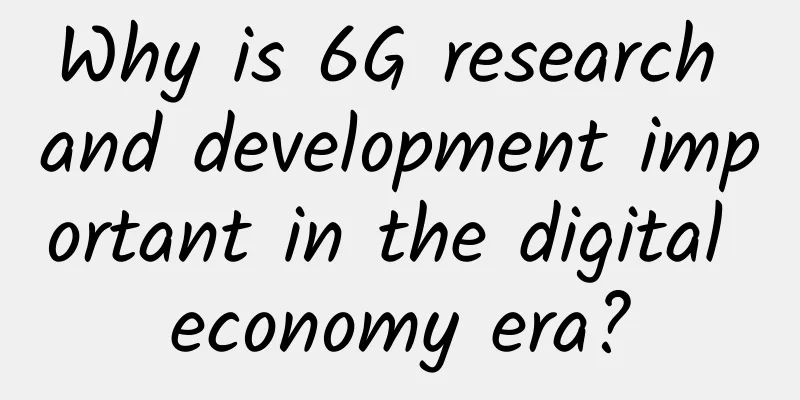5G healthcare development direction and challenges

|
The development of 5G healthcare has empowered the traditional medical industry. The pain points of the existing medical system are expected to be fully resolved due to the continuous improvement of new technologies. However, this expectation itself has become a shackle to solving the problem. The development and application of technology cannot be separated from the actual situation of real society. At the same time, its development direction will also affect the future. 1. Application scenarios and practical significance of 5G medical careSince 2019, as 5G has gradually entered our lives and work, all walks of life are rapidly entering the era of digital economy. As a new generation of information and communication technology, 5G technology is driving healthcare into a new technological era. 1. Main application scenarios of 5G medical care5G medical application scenarios are mainly divided into three categories: smart medical care for medical staff, smart services for patients, and smart management for hospital management. The main scenarios of smart healthcare for medical staff in the future can be divided into three categories: one is remote control scenarios based on new intelligent terminals, including robotic remote surgery; the second is remote guidance and diagnosis and treatment scenarios based on high-definition video and images, including remote rounds, remote consultations, remote emergency guidance, remote teaching and remote ultrasound diagnosis; the third is remote monitoring scenarios based on medical health sensors and equipment data, including real-time patient positioning, remote infusion monitoring, remote monitoring of chronic diseases, etc. In terms of hospital management application scenarios, we can make full use of the characteristics of 5G's massive network connections to build an in-hospital medical Internet of Things, organically connect the hospital's medical equipment, medical assets and non-medical assets, realize medical staff management, hospital asset management, equipment status management, in-hospital emergency dispatch, access control and security, etc., to improve patients' medical experience and the work efficiency of medical staff. Smart services for patients mainly include appointment booking, waiting reminder, in-hospital navigation, smart diagnosis and treatment, etc. Smart services are provided to patients under the 5G network. By deploying smart guidance robots that combine cloud, network and machine, and using the edge computing capabilities of the 5G network, artificial intelligence services based on natural semantic analysis are provided. Smart service applications for patients can improve the service efficiency of hospitals, improve the service environment of hospitals, reduce the workload of hospital guidance nurses, improve guidance efficiency, and reduce medical disputes. 2. The practical significance of 5G medical careFirst, 5G makes the emergency process more efficient. With 5G signal coverage, medical staff in the ambulance can communicate with the hospital's expert doctors in real time and let the expert doctors clearly see the physical condition of the patients in the ambulance. At the same time, the patient's electrocardiogram, blood oxygen saturation and other vital signs data can also be transmitted to the emergency center in real time, thus achieving efficient and accurate remote consultation, thus greatly increasing the survival rate and recovery rate of emergency patients. Previously, due to factors such as single, unstable and low-definition signals, efficient remote consultation was difficult to achieve. Second, 5G has promoted the transformation of medical education methods. "The development of 5G technology has made it possible to use technologies such as mixed reality in medical education and medical research." In the view of Chen Jianguo, vice president of Huazhong University of Science and Technology, secretary of the Party Committee and dean of Tongji Medical College, the mixed reality platform combines mixed reality technology with cloud computing and cloud storage technology, and transmits it through 5G communication technology. All hospitals and medical workers can communicate and discuss medical information face to face in real-time, holographic, and three-dimensional ways through the Internet. Third, 5G can bring a better experience for patients' personal health management after hospitalization. With the help of 5G technology, health management terminals can be connected to hospitals, communities, homes and other places, thereby integrating health information data from multiple channels of users. Based on this data, doctors can understand the health needs of the patient group through intelligent analysis such as AI, provide valuable basis for coordinating medical services, and allow more patients to participate. 2. Expansion direction of 5G medical care(I) Terminal side: Build a 5G-based medical Internet of Things ecosystem to realize intelligent medical services and visualized medical equipment management. Mobile healthcare in the 5G era requires not only upgrades in communication technology, but also comprehensive upgrades in related supporting industries to fully leverage the technical advantages that 5G brings to mobile healthcare. For medical and nursing handheld terminal devices, remote consultation video conferencing terminals, video acquisition terminals, wearable devices, medical robots and other intelligent terminal devices, 5G universal modules can be integrated to enable medical terminals to connect to 5G networks and use 5G networks to transmit data. (II) Network side: Reshape 5G network configuration based on business needs, customize securely isolated, and flexibly scheduled 5G medical private networks, and ensure the innovative development of medical applications. What the medical industry needs is a 5G medical private network. This network must not only meet the requirements of bandwidth, rate, and latency, but also focus on the secure isolation of medical data in actual applications, that is, medical data does not leave the hospital, customized flexible frame structure to meet the needs of a large number of uplink high-bandwidth services, dynamic perception of network bandwidth, dynamic allocation of network performance, rapid deployment and replication, and intelligent network operations. (III) Platform side: Build a 5G medical open edge cloud platform that integrates cloud and network, provide customers with manageable and controllable cloud-network integrated services, and effectively assist in the innovation of medical intelligent application scenarios, medical and health big data management, and cloud-based unified deployment of cluster applications. The platform side mainly realizes the storage, calculation and analysis of medical information, plays a transitional role between the upper and lower levels, and analyzes and processes scattered and disordered information through new technologies such as MEC, artificial intelligence, and cloud storage, and outputs valuable information for front-end applications. With the commercial use of 5G networks, the key applications of 5G networks, such as emergency rescue, inter-provincial patient transportation, and remote diagnosis and treatment, will generate massive amounts of data. The platform layer faces great pressure on the carrying, storage, and analysis of data. The role of the data middle platform has become more important and has become an important foundation for hospitals to achieve digital transformation. (IV) Application side: Cooperate closely with medical institutions, medical information service providers, etc. to build a team of industry experts, penetrate into the application field as an integrator, and gradually realize the implementation of smart applications in various links such as pre-hospital screening, pre-hospital emergency, in-hospital surgery, imaging diagnosis and treatment, and post-hospital rehabilitation. We should take the 5G smart medical information integration project as a starting point, and use the integrated application of 5G with emerging technology clusters such as cloud computing, the Internet of Things, big data, and artificial intelligence as an entry point to achieve "corps-based" operations. III. Problems and Challenges1. 5G network coverage and network stabilityMany application scenarios in the medical field have extremely high requirements for network coverage and stability. The construction of 5G networks is very fast. Although outdoor signal coverage within the Fifth Ring Road has been achieved in first-tier cities such as Beijing, because the main application scenarios of smart medical care are indoors, it is difficult to achieve full indoor coverage of 5G signals if only the 3G/4G indoor distributed systems in existing buildings are upgraded. This requires operators to re-deploy 5G indoor distributed systems according to the different building structures of hospitals and the functional divisions of different departments, and set up 5G pico base stations in the hospital campus, or achieve full indoor and outdoor 5G signal coverage in hospitals through shared poles and other methods. 2. Construction standards and evaluation system of smart healthcareWhen 5G is integrated with hospitals and the medical system, new medical application scenarios emerge, corresponding to which are the interconnection and interoperability of new terminal devices and instruments. In order to establish and improve the quality standard system, technical standard system, data standard system, interface standard system, etc. of instruments and equipment, it is necessary to gradually improve the technical standard system related to 5G smart medical care and 5G smart hospitals, so as to effectively test and control the quality of new medical and health terminal devices and instruments, and accelerate the integration of 5G technology and the medical industry. 3. Security system upgrade issuesMedical work involves massive amounts of health data, medical data, and medication data of the general public. Strengthening data supervision in the fields of smart hospitals and smart medical care is of utmost importance in protecting patient privacy. Only by establishing and improving a safe supervision system in the field of smart medical care can the sustainable development of smart medical care be ensured. |
<<: 5G rumors are spreading, and this time it is India that is hurt
Recommend
Why do 5G mobile phones support more frequency bands?
How many 5G frequency bands a mobile phone can su...
What issues should be paid attention to in the construction of office integrated network cabling?
The integrated wiring of the office will definite...
JuHost: $2.99/month-1GB/20G SSD/1TB@100Mbps/Kowloon, Hong Kong
JuHost has released a regular November promotion,...
Seven key points! Understand the "Threat Information Blue Report" released by Weibu Online and China Academy of Information and Communications Technology
On December 3, 2021, the Security Research Instit...
10gbiz: VPS 40% off, starting at $3.58 per month, CN2 GIA line, unlimited traffic in Los Angeles data center
10gbiz sent a blog reader exclusive discount code...
As VR enters its heyday, how will the three major operators plan their layout?
As we all know, VR is a very popular technology n...
The benefits of modern networks for businesses
Enterprise adoption of software-defined and virtu...
Port reuse So_Reuseaddr
Port reuse is a classic problem in network progra...
Network Address Translation Protocol (NAT) and Its Application Examples
1. The meaning of NAT When some hosts within a pr...
Linode: Cloud servers in 24 data centers around the world starting at $5/month, new users get $100 for free
It has been a long time since I shared informatio...
The 10 coolest software-defined networking technologies of 2017
Software is driving the innovation engine of the ...
Future trends driving unified communications in 2021
[[360050]] While 2021 is full of uncertainty for ...
Smart commercial buildings: Top 10 technologies to watch
In recent years, rapid advances in digital techno...
OTT IPTV has broad business opportunities. How can operators further explore CDN opportunity windows?
At the Asia-Pacific CDN Summit in April, George, ...
Gcore (gcorelabs) Santa Clara VPS simple test
A few days ago, we posted simple test information...









